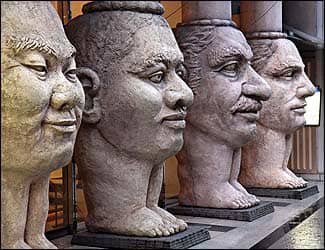The Caucasian, or European, model for the ideal nose is out and a global approach to rhinoplasty, considering patients’ ethnicities, backgrounds and facial structures, is in. That’s according to facial plastic surgeons who will be presenting at the American Academy of Facial Plastic and Reconstructive Surgery (AAFPRS) Advances in Rhinoplasty Meeting in Chicago from May 4 to 7.
“Surgeons should realize that many of the ‘nuances’ that we’ve taught over the years were really done by surgeons 40 years ago, who were looking primarily at Caucasian patients. It’s not really completely fair to use that ‘ideal’ for every facial structure,” says meeting co-chaire and facial plastic surgeon Sam P. Most, M.D., chief of facial plastic surgery at Stanford University.
Rhinoplasty has evolved, according to J. Regan Thomas, M.D., a facial plastic and reconstructive surgeon who will be moderating a panel at the meeting, which will discuss diversity of cultural and ethnic norms for the “ideal” nose.
“There has been a very positive evolution in our understanding that facial beauty comes in many fashions. If you look at the celebrities that impact us and the models in key fashion magazines, they come from a variety of backgrounds and ethnicities. So, it’s a matter of understanding that, for example, a Latino patient’s nose or an African American nose are beautiful, but their structural aspects are different than, perhaps, a Caucasian nose,” says Dr. Thomas, chairman of otolaryngology, head and neck surgery and facial plastic surgery at the University of Illinois.
Not only are aesthetic surgeons embracing this more global concept of the ideal nose, but so is the public, Dr. Thomas says.
Click here to view original web page at cosmeticsurgerytimes.modernmedicine.com




